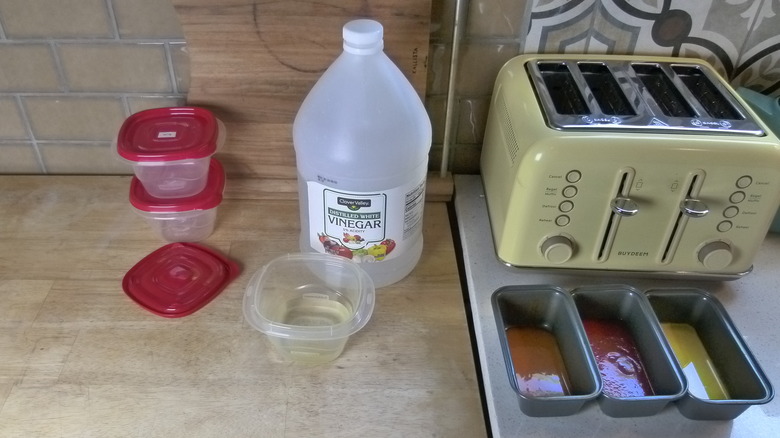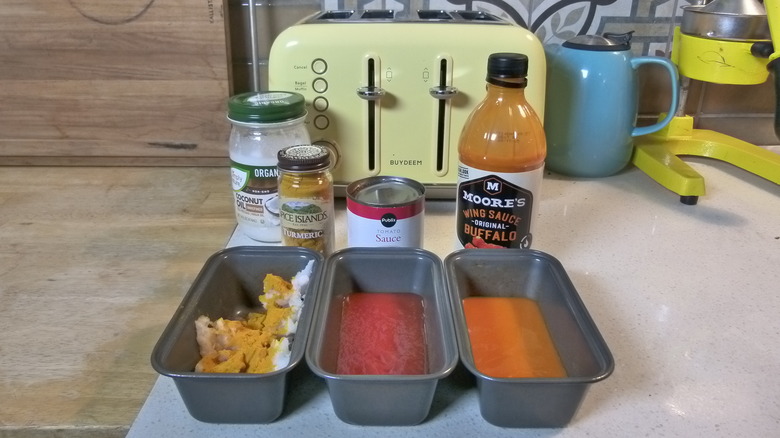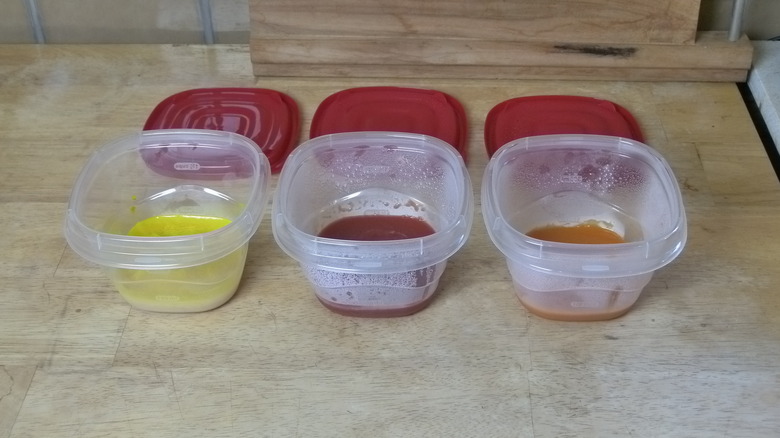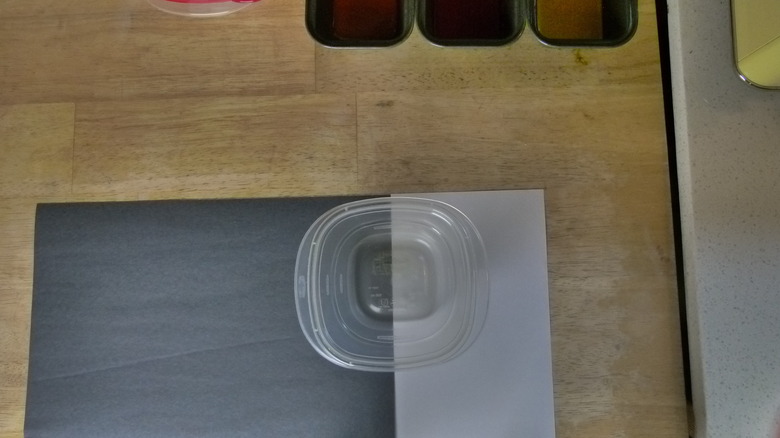Can Vinegar Clean Stained Plastic Containers? We Put It To The Test
You expect it as soon as you spoon the leftovers into the plastic storage containers — the tomato sauce is going to stain the container. It's harmless but annoying and, sometimes, embarrassing. And it's not just the spaghetti bolognese; the same thing happens with curries containing turmeric, and even chicken wings tossed in buffalo sauce. I had a vague sense of what was causing the stains, but no idea what to do about it. Conventional wisdom says to live with it. Slightly more determined wisdom suggests trying bleach ... which is not something I want to handle every time I'm washing dishes. But a new suggestion has been floating around, and at first glance, it doesn't make a lot of sense: Clean the plastic by soaking it in distilled white vinegar. If a strong alkaline like bleach is called for, how likely is an acid like vinegar to do the job? So I gave it a try, and it seems to do the trick.
Reading about these annoying stains turned up a few important variables. Whether the plastic container is new appears to matter. And it definitely matters if the container has been through a cycle in the dishwasher, which is said to set the stains. I factored all that in and started cooking.
Storing leftovers from a meal that never was
Okay, you wouldn't exactly call it "cooking" unless you're a college student. My wife, who's been used to my test kitchen antics for years, didn't bat an eye as I heated three small pans of Publix Tomato Sauce, Moore's Original Buffalo Wing Sauce, and a mixture of Spice Islands Turmeric and coconut oil (replaced later with half-and-half). Everything I read said the staining is worsened by heat, and it certainly felt more realistic to store the "leftovers" very warm.
These agents of stain were put into Rubbermaid TakeAlongs plastic storage containers overnight after abrading one side of the bottom of each container with coarse sandpaper. The idea of the sanding was to see if the effect varied for used, scratched plastic containers compared with new ones, so I wasn't overly precise about it. The sanding was light enough to do the job without unleashing any bits of plastic if these containers are ever used for actual food. I didn't see anyone claiming that scratched plastic was more likely to be stained; it just seems like scratches would increase the plastic's surface area (giving the sauces more to grab onto) and maybe damage any protective finish.
If at first you don't stain, try, try again
It turns out that all three of our staining sauces have something in common: carotenoids. These are red, yellow, and orange pigments found in tomatoes, turmeric, and peppers. Carotenoids are also responsible for red and orange foliage when leaves change color in the fall, or don't, after a hot summer. When cooked with oils, these fat-soluble, hydrophobic pigments bond with porous plastics and form stubborn stains that, being hydrophobic, are almost impossible to remove.
With all that in mind, I mimicked the process of storing carotene-rich foods in plastic containers as follows: I heated the sauces, then stored them in the plastic containers with half-abraded bottoms. After 12 hours in the fridge, I emptied the contents and hand-washed the containers in dish soap and water. I surveyed the stains, expecting the worse, and found that there basically weren't any stains. Were the stains a lie, a trick of my brain like Mr. Monopoly's monocle or Mickey Mouse's suspenders? But after three batches of sauces and about 48 hours, I got a little staining, mostly in the container with turmeric and half-and-half (I switched after getting no result with the coconut oil). To get rid of my hard-earned stain, I filled the containers with 5% distilled white vinegar for 12 hours, made my observations, then repeated the process, this time using a dishwasher. Finally, I soaked the containers in 30% cleaning vinegar to see if it removed any stain remnants.
It worked great; let's forget this ever happened
The vinegar worked well, though I'm not entirely sure why. Some research has indicated that carotenoids become more transparent when exposed to acids, which might have something to do with the effect. Vinegar can also get your plastic furniture sparkling clean, but other acids work as well; lemon is another ingredient from your kitchen that will save your stained plastic containers. None of the stains were particularly bad to begin with, and by the time I used the 30% vinegar there was very little staining left to remove. Trying to unpuzzle the chemistry with my level of knowledge is like attempting to read "Le Malade Imaginaire" with what I remember from listening to one side of a Teach Me French audio cassette in 1987.
On the whole, I'd say that the whole business of soaking stained plastic in vinegar, while effective, might not be worth the trouble. Storing the containers with their lids in place eliminates the vinegar smell from the kitchen, but you still end up with plastic containers sitting around for half a day, on top of having to be run through the dishwasher twice (or washed once and rinsed extremely well after the vinegar treatment). Maybe it would be worthwhile if you have a container dedicated to displaying a trifle at potlucks, which would be compromised by carotene stains. For my part, I can't really see myself bothering with it again. But it does work.



